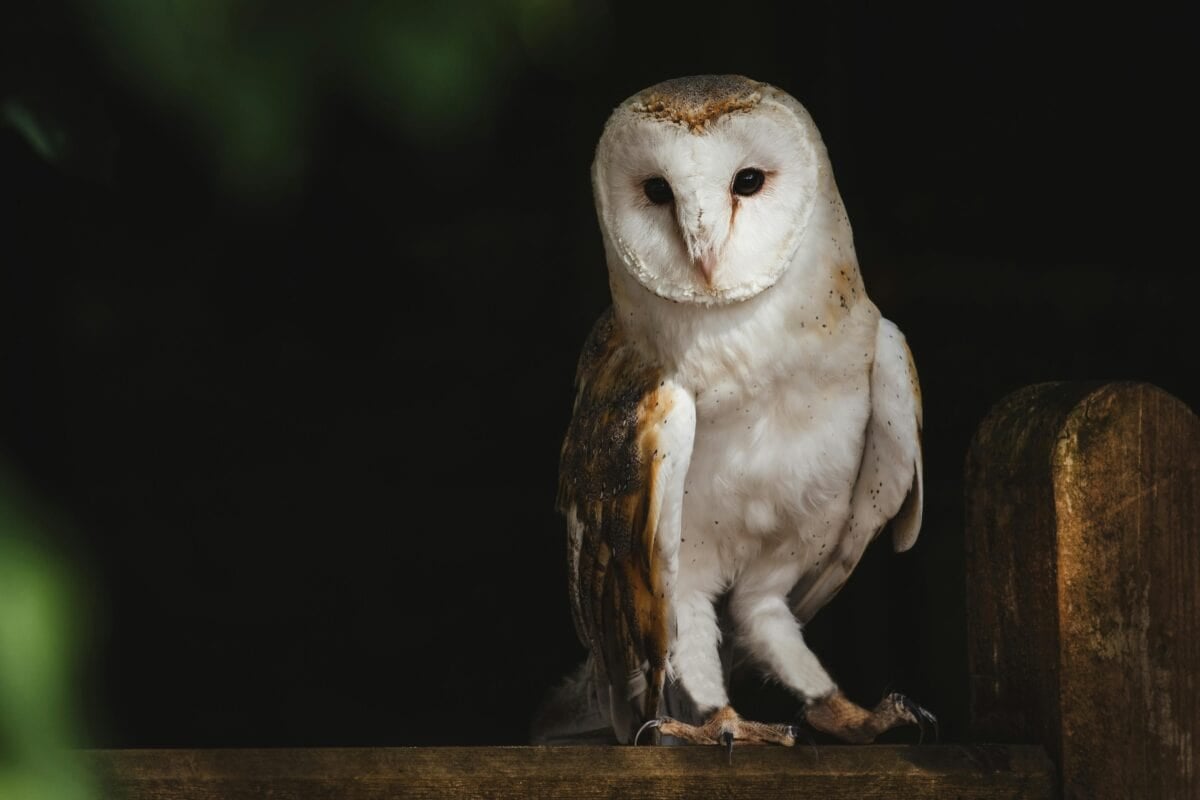Owls have captivated human imagination for millennia with their mysterious nocturnal habits and seemingly supernatural abilities. While their silent flight and rotating heads often steal the spotlight, it’s their extraordinary eyes that truly deserve our attention. These remarkable visual organs aren’t just larger versions of other birds’ eyes—they’re specialized evolutionary marvels that enable owls to dominate the night sky as efficient predators. From their unusual placement to their incredible light-gathering abilities, owl eyes represent one of nature’s most specialized adaptations. This article explores fifteen fascinating facts about owl eyes that reveal just how remarkable these structures truly are, highlighting features that have helped these birds thrive for over 60 million years.
15. Owls Cannot Move Their Eyes

Unlike humans and most other animals, owls cannot move their eyes in their sockets. Their eyes are fixed in place by a bony structure called the sclerotic ring, which is a series of bones that surrounds the eye. This immobility means that to change their field of vision, owls must move their entire head. This might seem like a disadvantage, but it’s actually part of what makes owls such effective hunters.
This fixed eye position provides superior binocular vision and depth perception, crucial for pinpointing prey with deadly accuracy. To compensate for this lack of eye movement, owls have evolved the ability to rotate their heads up to 270 degrees, allowing them to look in almost any direction without moving their bodies—a valuable adaptation that helps them maintain stealth while scanning their surroundings for potential meals.
14. Proportionally Enormous Eyes
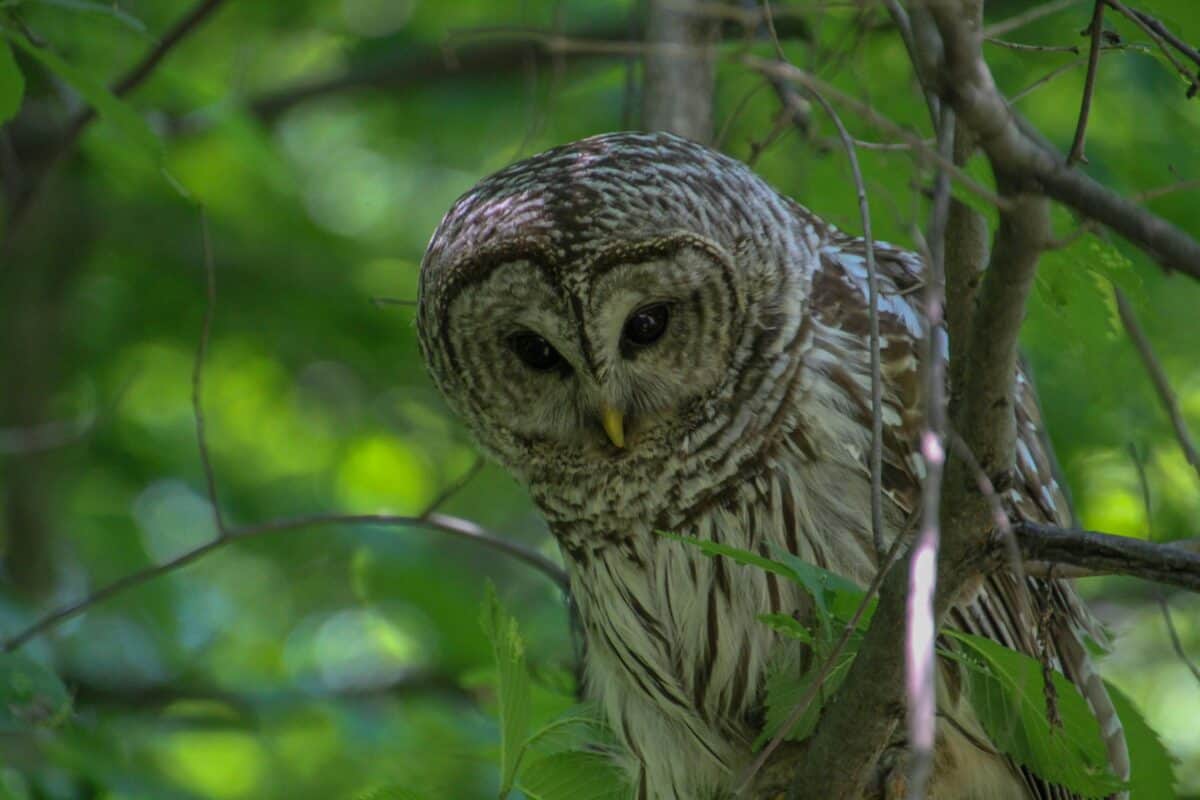
If human eyes were proportionally the same size as owl eyes, they would be as large as grapefruits. Owl eyes account for up to 5% of their total body weight, compared to human eyes which make up only about 0.0003% of our body weight. The Great Horned Owl’s eyes are nearly as large as human eyes, despite the bird weighing only about 3 pounds. These oversized visual organs are essential for capturing as much light as possible in low-light conditions.
This disproportionate eye size explains why owls have such distinctive facial discs—their skulls have evolved to accommodate these massive optical instruments. The extraordinary size of their eyes is a direct adaptation to their nocturnal lifestyle, allowing them to gather sufficient light to hunt effectively when most other birds are rendered essentially blind by darkness.
13. Forward-Facing Eyes Provide Superior Depth Perception
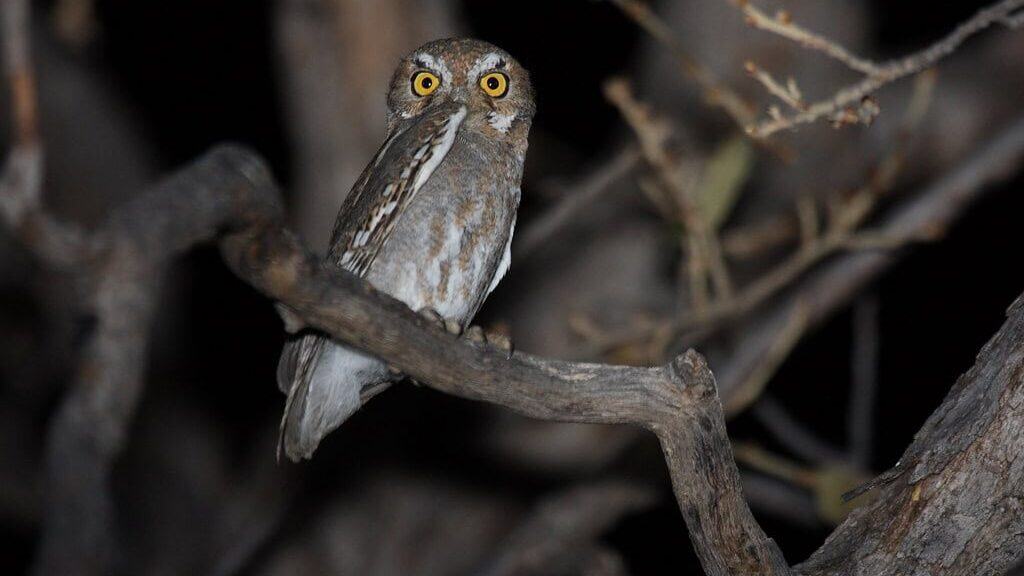
Unlike most birds that have eyes on the sides of their heads, owls have forward-facing eyes similar to humans. This frontal positioning creates significant binocular vision, with an overlap of 70% between what each eye sees (compared to just 30% in pigeons). This enhanced binocular vision gives owls exceptional depth perception, allowing them to judge distances with remarkable precision when swooping down on prey.
The trade-off for this superior depth perception is a narrower field of view—about 110 degrees compared to the 300+ degrees that some birds with side-mounted eyes enjoy. However, the owl’s ability to rotate its head compensates for this limitation, and the accuracy gained from improved depth perception proves far more valuable for a predator that needs to make split-second judgments about prey location in three-dimensional space.
12. Specialized Night Vision Capabilities
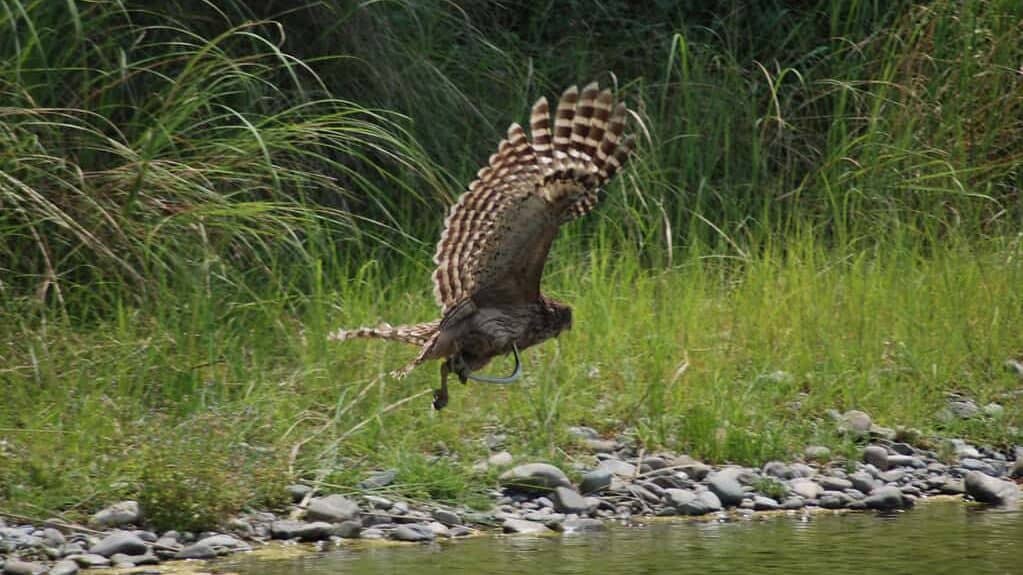
Owl eyes contain an extraordinary density of rod cells—the photoreceptors responsible for detecting light in low-light conditions. Some owl species have up to 56,000 rod cells per square millimeter in their retinas, compared to just 200,000 total rod cells in the human eye. This concentration of light-sensitive cells allows owls to see in light levels up to 100 times dimmer than what humans require. Additionally, the retina of nocturnal owl species lacks cone cells in some areas, creating more space for the light-sensitive rod cells.
Further enhancing their night vision, owls possess a specialized layer behind their retina called the tapetum lucidum. This reflective layer acts like a mirror, bouncing light back through the retina a second time, effectively doubling the light-gathering capacity of their eyes. This adaptation explains the eerie eyeshine seen when owl eyes reflect light in darkness—the same phenomenon seen in cats and other nocturnal predators, though achieved through a different anatomical structure.
11. They Have Three Eyelids

Owls possess three distinct eyelids for each eye, each serving a different purpose. The upper and lower eyelids close when the owl sleeps, just as in humans. However, owls also have a third eyelid called the nictitating membrane—a thin, translucent structure that moves horizontally across the eye from the inner corner to the outer edge. This specialized membrane serves multiple critical functions in the owl’s daily life.
The nictitating membrane cleans and protects the eye without completely obstructing vision. It sweeps across the eye surface, distributing tears and removing debris while allowing some light to still enter, enabling the owl to maintain some visual awareness even during blinking. This membrane also protects the eye during hunting, preventing damage when striking prey or moving through dense vegetation, and helps shield the sensitive eye surface from excessive light when the owl must be active during daylight hours.
10. Color Vision Varies By Species

Not all owls see the world the same way when it comes to color. Research has revealed that owl color vision capabilities vary significantly between species, primarily based on their activity patterns. Strictly nocturnal species like the Barn Owl (Tyto alba) have limited color vision, possessing fewer cone cells—the photoreceptors responsible for color detection. These species have essentially sacrificed color vision to maximize their ability to detect movement and contrast in near-darkness.
In contrast, diurnal or crepuscular owl species (those active during dawn, dusk, or daytime) like the Burrowing Owl (Athene cunicularia) retain more cone cells and better color discrimination. Some species even show sensitivity to ultraviolet light, an ability that may help them track rodents, as rodent urine reflects UV light. This variation in color perception demonstrates how owl vision has evolved specifically to match each species’ ecological niche and hunting strategy.
9. Asymmetrical Ear Placement Complements Their Vision

While not directly about their eyes, the asymmetrical placement of an owl’s ears works in conjunction with their visual system to create an unparalleled hunting apparatus. In many owl species, particularly those specialized for hunting in complete darkness, one ear opening is positioned higher on the skull than the other. This arrangement creates minute differences in the time sound reaches each ear, allowing owls to triangulate the precise location of prey based on sound alone.
This auditory adaptation complements their visual system, allowing owls to create a complete three-dimensional model of their environment by integrating both visual and auditory information. When prey is hidden by vegetation or snow, or when darkness is too complete even for their specialized eyes, owls can still hunt effectively using their asymmetrical hearing. This remarkable integration of sensory systems demonstrates how evolutionary adaptations work together to create superbly efficient predators.
8. Their Eyes Are Tubular, Not Spherical

Unlike the roughly spherical eyes of humans and many other animals, owl eyes have a distinctive tubular shape. This elongated structure increases the size of the image on the retina, effectively functioning like a telephoto lens. The tubular shape provides greater visual acuity at distance, allowing owls to spot tiny movements from perches high above their hunting grounds. This adaptation is particularly valuable for detecting small rodents moving through grass or underbrush.
However, this specialized shape comes with limitations. The tubular structure restricts the eye’s ability to adjust focus quickly between objects at different distances. While humans can rapidly shift focus from near to far objects, owls must physically move their heads to change their focal point. Additionally, the elongated shape is why owl eyes cannot move in their sockets—they’re firmly held in place by the sclerotic rings that maintain the tubular structure necessary for their exceptional distance vision.
7. They Can See in Almost Complete Darkness

The light-gathering capacity of owl eyes is truly extraordinary. The Northern Hawk Owl (Surnia ulula) can detect a vole moving against snow at a distance of half a mile, even under the faint illumination of starlight. This remarkable sensitivity stems from multiple adaptations working in concert: the large pupil size, the high density of rod cells, the reflective tapetum lucidum, and the brain’s ability to process visual information from minimal light input.
Research has shown that some owl species can detect prey with as little as 0.00000073 foot-candles of light—effectively approaching the theoretical limits of light detection. To put this in perspective, this is approximately 100 times dimmer than the light level humans need to see anything at all. This extraordinary night vision capability allows owls to occupy a nocturnal hunting niche with minimal competition from other predatory birds, which generally lack the specialized visual adaptations necessary to hunt effectively in darkness.
6. Owl Pupils Always Remain Circular

Unlike cats and many other nocturnal animals that have vertical slit pupils that can dramatically change shape, owl pupils remain perfectly circular regardless of how dilated or constricted they become. This circular pupil shape allows for more symmetrical constriction and dilation, which helps maintain consistent image quality across their visual field. When fully dilated in darkness, an owl’s pupil can occupy nearly the entire visible portion of the eye, maximizing light collection.
The circular pupil shape is particularly advantageous for predators that need to maintain accurate depth perception in varying light conditions. While vertical slit pupils excel at controlling light intake across extreme brightness variations, the owl’s circular pupils better preserve the spatial relationships and parallax information needed for precise depth judgment when striking moving prey. Combined with their forward-facing eye placement, these circular pupils help create the extraordinarily accurate three-dimensional vision that makes owls such effective hunters.
5. Their Eyes Can Detect UV Light That Humans Cannot See

Recent research has revealed that many owl species can perceive ultraviolet (UV) light, a portion of the light spectrum completely invisible to humans. This ability stems from specialized UV-sensitive cone cells in their retinas and the transparency of their ocular media to UV wavelengths. The capability to detect UV light provides owls with several hunting advantages that were previously unknown to scientists. Perhaps most significantly, many rodents’ urine trails and some of their fur markings reflect UV light, potentially creating a visual “trail” that owls can follow to track prey movement patterns.
This UV sensitivity may explain observations of owls successfully hunting voles and other small mammals in seemingly featureless snow-covered landscapes, where traditional visual cues would be minimal. The owl’s ability to detect these UV signatures essentially reveals a hidden landscape of rodent activity invisible to human observers. This adaptation represents yet another way that owl vision has evolved specifically to excel in their ecological niche as precision nocturnal hunters, giving them access to visual information completely unavailable to most other predators.
4. Facial Disc Feathers Function Like Satellite Dish

The distinctive facial disc of feathers that gives owls their characteristic appearance serves a critical function in enhancing their visual capabilities. These specialized, stiff feathers are arranged in a concave dish shape around each eye and can be adjusted by the owl to focus sound toward their ears. However, these feathers also play an important visual role by reducing glare and directing light toward the eyes, essentially functioning like a satellite dish for collecting visual information.
The dark coloration of many facial disc feathers helps absorb scattered light that might otherwise create visual “noise” around the periphery of the owl’s vision. By controlling and directing the light that reaches their eyes, these facial feathers help enhance contrast detection in low-light conditions. Additionally, the facial disc shape creates a more uniform light environment around each eye, helping to optimize the function of their highly sensitive retinas. This integration of feather structure with visual function demonstrates the remarkable evolutionary refinement of the owl’s sensory systems.
3. They Have Excellent Monocular and Binocular Vision

Owls possess the rare ability to excel at both monocular and binocular vision. Their forward-facing eyes provide approximately 70-degree binocular overlap—the area where both eyes can see simultaneously—giving them excellent stereoscopic vision and depth perception within this field. This binocular vision is crucial for precisely judging the distance to prey when hunting. However, owls retain surprisingly good monocular vision (using each eye independently) in the areas outside this overlap.
The total visual field of an owl is approximately 110 degrees per eye, with a combined field of about 200 degrees when accounting for overlap. While this is less than the nearly 360-degree view of some prey birds with side-mounted eyes, it represents an optimal compromise between panoramic awareness and precision depth perception. The owl compensates for any limitations in its visual field through its extraordinary neck flexibility, allowing it to monitor its surroundings by rotating its head rather than moving its eyes. This combination of visual capabilities enables owls to maintain situational awareness while simultaneously possessing the focused, depth-accurate vision needed for hunting.
2. Owl Eyes Contain More Rod Cells Than Any Other Animal

The retinas of owl eyes contain the highest density of rod photoreceptors documented in any animal, with some species possessing over 56,000 rod cells per square millimeter. This extraordinary concentration of light-sensitive cells far exceeds that found in human eyes and even surpasses other nocturnal specialists like cats. The rod cells are particularly concentrated in a specialized region called the area centralis, which provides high-resolution vision in dim light—a critical adaptation for detecting subtle movements of small prey in near-darkness.
In many owl species, particularly those that are strictly nocturnal, the ratio of rods to cones (color-detecting cells) can exceed 30:1, compared to approximately 20:1 in humans. This predominance of rod cells comes at the expense of color vision but provides exceptional sensitivity to light and movement. Additionally, the rod cells in owl retinas contain more light-sensitive pigment than those in diurnal birds, further enhancing their ability to detect minimal light. This specialization represents one of the most extreme sensory adaptations in the vertebrate world, allowing owls to effectively operate in a light environment inaccessible to most other predators.
1. Remarkable Adaptation to Their Ecological Niche
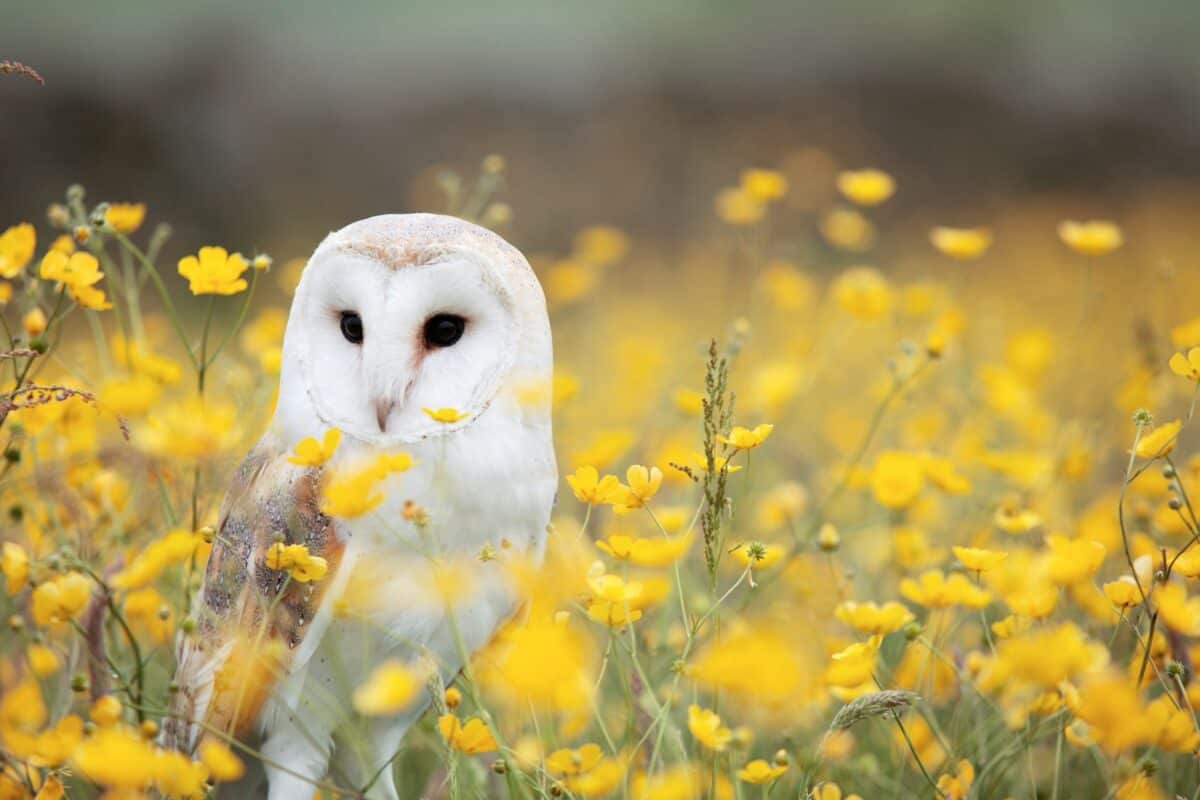
Owl eyes represent one of nature’s most impressive examples of adaptive specialization to an ecological niche. Over millions of years, these birds have evolved visual systems precisely calibrated to the demands of nocturnal hunting, with each feature—from their tubular eye shape to their high rod cell density—serving their predatory lifestyle. The immobility of their eyes, while seemingly a limitation, actually enhances their visual stability and precision. Their oversized eyes maximize light collection, while their forward-facing positioning provides the depth perception crucial for accurate strikes.
Perhaps most remarkably, different owl species show variations in their visual adaptations that correspond exactly to their specific ecological needs. Strictly nocturnal species like the Barn Owl have more extreme adaptations for light sensitivity, while crepuscular species like the Great Horned Owl retain more visual features useful in transitional light. Diurnal species like the Burrowing Owl maintain better color vision for their daylight hunting. This fine-tuning of visual capabilities to specific hunting strategies and environments demonstrates how natural selection can produce extraordinary sensory specialization, making owl eyes one of evolution’s most impressive achievements in the vertebrate world.
Conclusion: Windows to an Extraordinary World
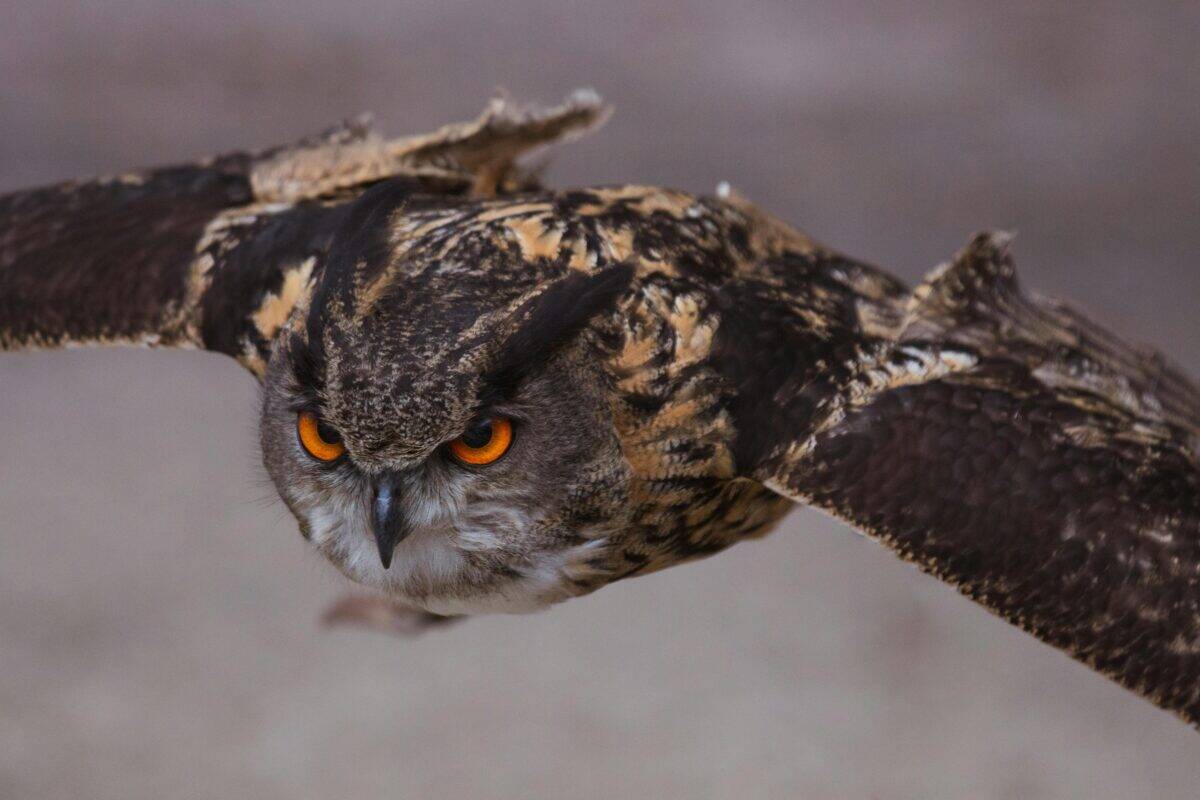
Owl eyes stand as one of nature’s most remarkable sensory adaptations, representing the culmination of millions of years of evolutionary refinement. These extraordinary visual organs have allowed owls to dominate the nocturnal predatory niche, seeing in near-darkness with a precision that borders on the supernatural. From their tubular shape and immobile positioning to their massive size and specialized cellular composition, every aspect of owl eyes is precisely calibrated to serve their role as efficient nocturnal hunters.
What makes owl eyes particularly fascinating is how they illustrate the principle of evolutionary trade-offs—sacrificing eye mobility, some color vision, and field-of-view width to gain the specific visual
- 15 Things You Did Not Know About Owl Eyes - August 7, 2025
- 15 Times Rescue Animals Proved They Are the Best Companions - August 7, 2025
- 14 Signs Animals Experience Joy - August 7, 2025

